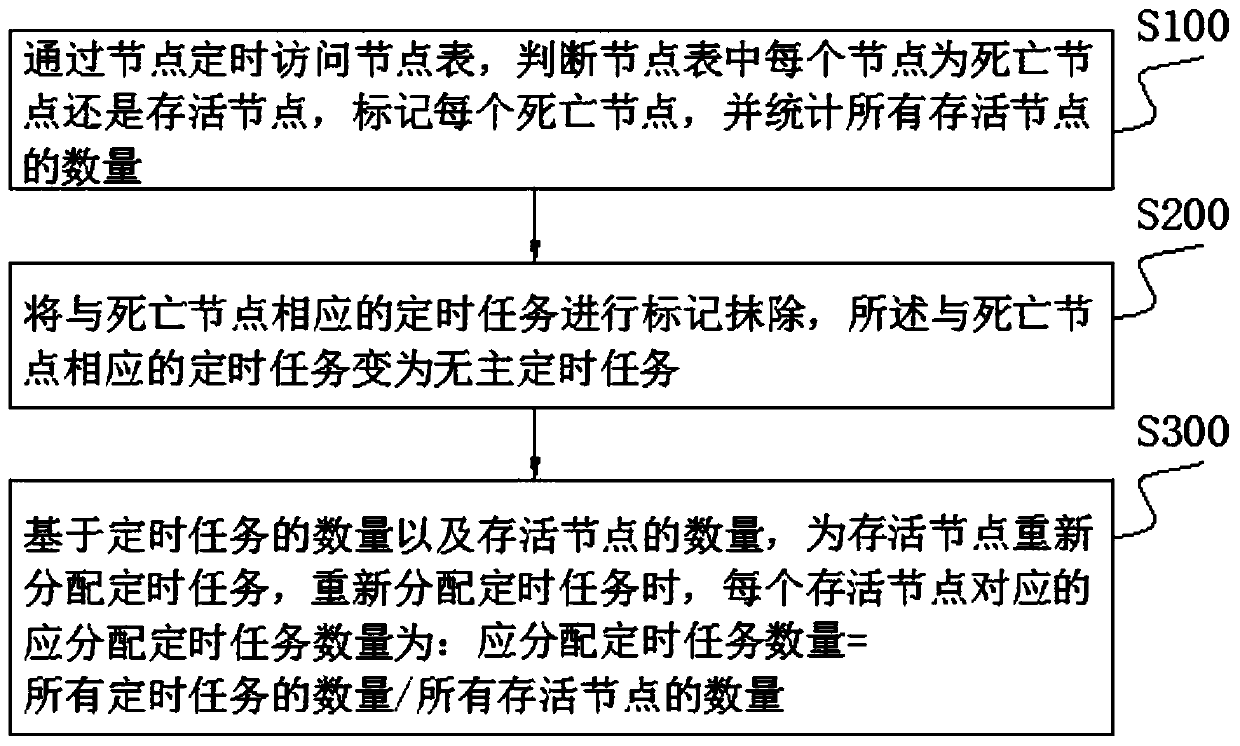Timed task management system based on message queue and allocation method
A technology for timed tasks and message queues, which is applied in electrical digital data processing, inter-program communication, instruments, etc., can solve the problems of resource consumption and tedious business expansion, and achieve the effect of ensuring asynchrony
- Summary
- Abstract
- Description
- Claims
- Application Information
AI Technical Summary
Problems solved by technology
Method used
Image
Examples
Embodiment 1
[0040] The timing task management system based on the message queue of the present invention includes an executor, a message queue, a node and a database.
[0041] There are many kinds of executors in the system, at least one of each kind of executor, and the executor is a process created in the corresponding program, which is used for registration, modification, deletion and execution of timed tasks.
[0042] There are multiple message queues, and each message queue corresponds to a kind of executor, which is used to transmit the scheduled tasks to the corresponding executors, and the message queue supports selective random distribution of scheduled tasks or sequential distribution of scheduled tasks.
[0043] There are multiple nodes. The node is a component designed through decentralization. The timing task allocation algorithm is configured in the node, and the timing task is allocated to the message queue through this algorithm.
[0044] The principle of the allocation al...
Embodiment 2
[0052] The message queue-based timed task allocation method of the present invention is applied to the message queue-based timed task system disclosed in Embodiment 1. The allocation method includes the following steps:
[0053] S100, regularly accessing the node table through the nodes, judging whether each node in the node table is a dead node or a living node, marking each dead node, and counting the number of all living nodes;
[0054] S200. Mark and erase the scheduled task corresponding to the dead node, and the scheduled task corresponding to the dead node becomes an unowned scheduled task;
[0055] S300. Based on the number of scheduled tasks and the number of surviving nodes, re-allocate the scheduled tasks for the surviving nodes. When re-assigning the scheduled tasks, the number of scheduled tasks corresponding to each surviving node is:
[0056] The number of scheduled tasks to be allocated = the number of all scheduled tasks / the number of all surviving nodes.
...
PUM
 Login to View More
Login to View More Abstract
Description
Claims
Application Information
 Login to View More
Login to View More - R&D Engineer
- R&D Manager
- IP Professional
- Industry Leading Data Capabilities
- Powerful AI technology
- Patent DNA Extraction
Browse by: Latest US Patents, China's latest patents, Technical Efficacy Thesaurus, Application Domain, Technology Topic, Popular Technical Reports.
© 2024 PatSnap. All rights reserved.Legal|Privacy policy|Modern Slavery Act Transparency Statement|Sitemap|About US| Contact US: help@patsnap.com









